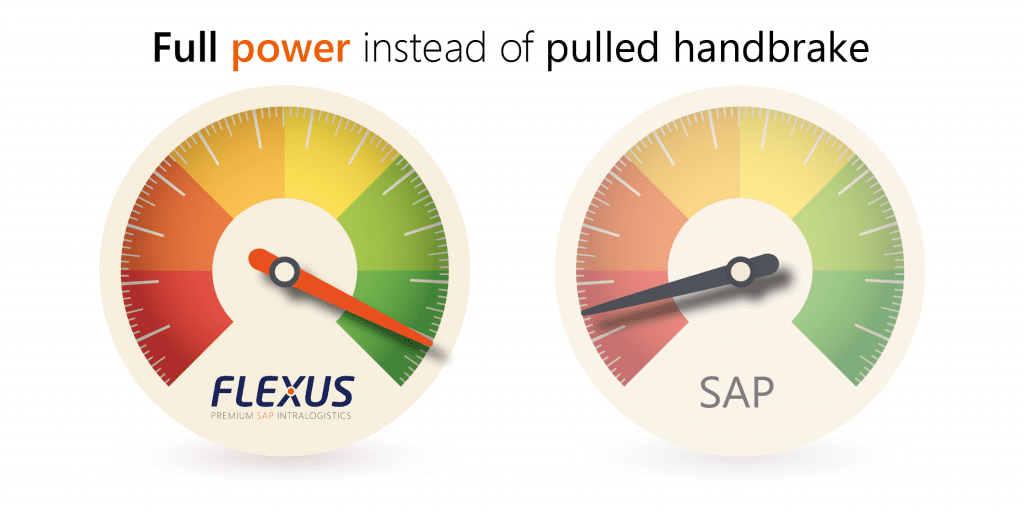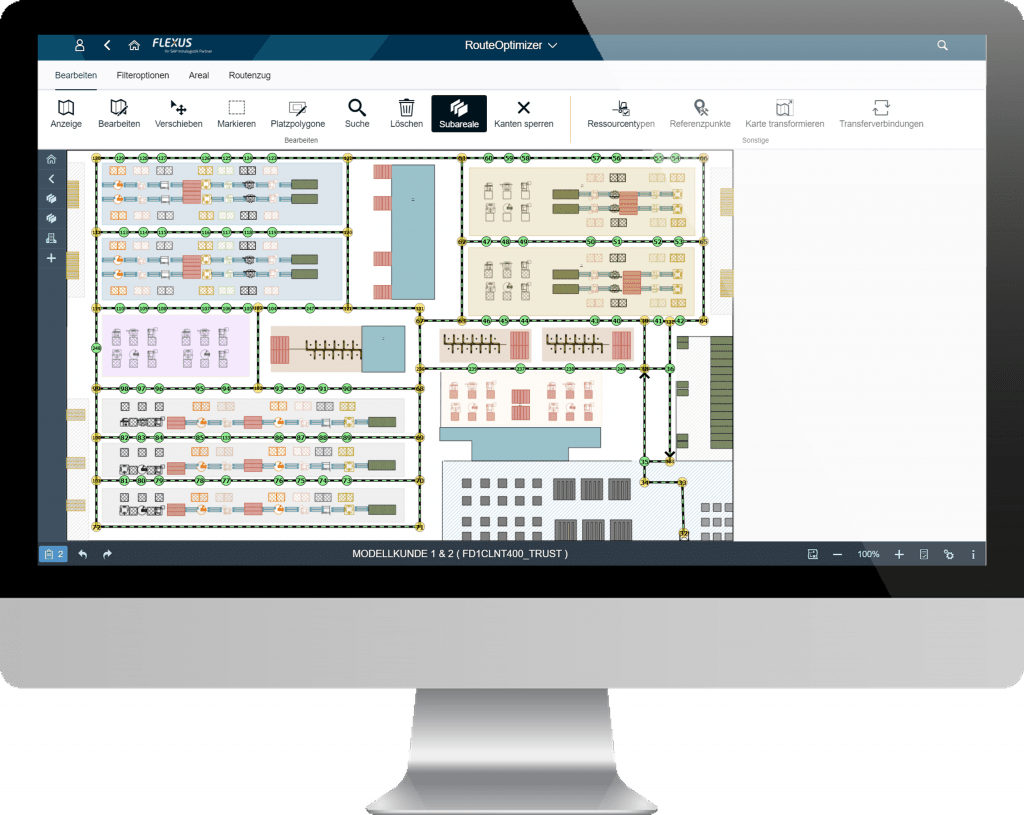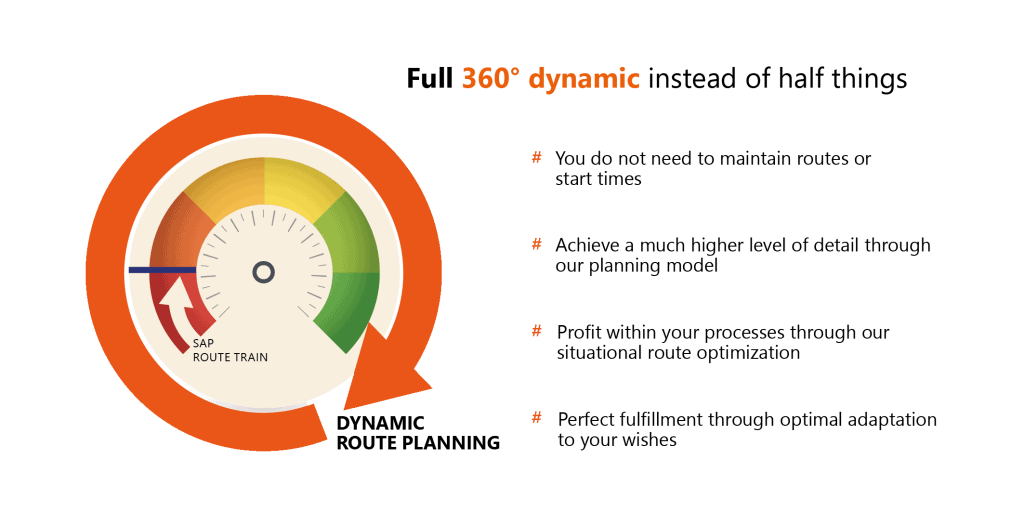
What is a tugger train and why are tugger trains becoming increasingly relevant?
A tugger train is a material handling unit that normally consists of a tractor and several unsteered trailers. It should be mentioned here that the configurations of the trailers are as varied as the possible applications of a tugger train.
Although the use of a tugger train requires some advance planning, since it is simply no longer a (freight) individual transport as with forklifts, it is nevertheless finding its way into more and more production facilities.
The reason for this is the charming property of the tugger train to replace several forklifts at once when used appropriately. This has numerous synergy effects: The volume of traffic in production is calmed, which reduces the likelihood of accidents and at the same time makes more space accessible for concrete production facilities. In addition, the cost factor should not be underestimated, since – as already mentioned – one tugger train can replace several forklifts. This reduces maintenance, service and personnel costs. In the same way, less energy is required, thus protecting people and the environment.
You can also find more information in our glossary article on the subject of tugger trains.
SAP EWM Route Train
The trend towards tugger trains has not passed SAP by. This has given EWM a route train mapping in an SAP S/4HANA add-on. Here, the name “Route train” says it all, as the focus is on route trains with fixed routes.

Preparation and maintenance
Basically, the objective is to form EWM warehouse tasks into tours on a fixed route in a sensible sequence. This means defining possible stops, draping them into a route, and fixing them. From this, tours are formed, which can then be processed by a logistics employee.
The most important information is summarized below. For a deeper insight, I refer to the SAP blog entry by Martin Ziehl, from which the images are also taken.
The stops – referred to by SAP as “Stops” – can be maintained in a separate “Manage Stop” app. The prerequisite for a stop is a product supply area (PSA) already maintained in EWM, which can be referred to. In the app, stop properties such as unloading direction or affected storage location can be specified. Moreover, as the most important one, a validation method can be set here with the information that the worker must scan to confirm an unloading operation in the system.
In a second Fiori app – the “Manage Routes” – the stops can now be grouped and arranged in an order behind a route. Here a certain parameterization can be made by a route type. For example, the duration of the route, start time and the like can be stored.
Tour building
SAP offers two different strategies for tour formation, i.e. a concrete trip on the route:
- Schedule based:
This is analogous to a bus schedule with scheduled service on the individual routes. A storage task is scheduled backwards, i.e. to the last tour, so that the tugger train arrives at its destination on time.
- Workload oriented:
Stops can be subgrouped by a handling unit (HU). In addition, it is possible to maintain when a handling unit is considered full. With this additional information, the tours can be designed one step more in line with demand – i.e. capacity utilization. A tour is then only formed in the case of due date violations or in the case of a full HU.
So it turns out that SAP is mapping a rare standard case here, but is also trying not only to digitize, but to directly provide an optimization tool. The (fully) dynamic tugger train of Flexus AG goes one step further here.
The (fully) dynamic tugger train of the Flexus
The potential of tugger train processes was recognized at Flexus at a very early stage. This route-based solution was developed chronologically even before SAP’s own solution, which has already been outlined. In the meantime, this development has reached another level, as is directly evident in the maintenance of the application.

Preparation and maintenance
Unlike the SAP solution, locations are not maintained in tabular form and do not represent logical subdivisions. In the RouteOptimizer of the Flexus, the actual plant with its route network can be mapped in a graphical and user-friendly interface. In addition, routes no longer need to be maintained here for dynamic route planning, because they are determined ad-hoc based on the possible orders. In addition, no fixed start or travel times between destinations need to be specified.
In the minimum configuration, maintenance is limited to parameters that are used for the planning model, such as the average speed of the route train, a duration for picking up or putting down a transport item or similar.
Of course, you can take care to the extreme as you like. There is a possibility to assign specific shift models and trailer schemes to individual resources. Here, again, a very precise detail resolution can be achieved in each case – be it multiple layers with their own breaks or trailer schemes with a wide variety of trailer types and/or different trailer levels.
Tour optimization – not only tour building!
As a major difference to SAP’s own solution, it should be mentioned directly that in dynamic route optimization there is no two-stage backward scheduling, but rather advance planning based on the maintained area and model. The objectives of route optimization in the standard are the following aspects
- minimal delays
- minimum distance
- minimal allocation of resources.
This objective, or a weighting of objectives, is sought through optimization based on the planning model and maintained behaviors. The objective here is to be seen on the overall planning and not only on the basis of the individual tour.

Due to a cyclical revision of the tour plan, even the composition of individual tours can change depending on the situation. This situational optimization also provides the ability to react to delays or early arrivals. Image 4 shows an example of how route planning is built up and constantly changed throughout the day on the basis of the order pool.
In addition, the sustainable usability of the dynamic planning is particularly noteworthy. If a new possible destination for the tugger train is added or an existing destination point is moved, this only has to be changed accordingly in the RouteOptimizer and is taken into account directly in the next planning.
Conclusion: Optimize with Flexus, not just control!

Compared to SAP, the dynamic route train optimization stands out due to its simpler and more realistic maintenance. It also turns its back on the idea of predefined routes, thus creating a balancing act that combines both the higher transport capacity of a route train and the situational operational capability of a forklift truck. In addition, real optimization takes place here and not just a piling up of orders as with the SAP solution. The add-on thus fits seamlessly into the existing Flexus ecosystem and can be used together with the existing solutions for forklifts and automated guided vehicles. The best example of this is the pre-picking process of the route train, which can be done by a forklift.
This article has aroused your interest? Be sure to also read the two blog articles Algorithms for optimizing route trains with SAP or 5 steps to fully dynamic tugger train control with SAP!

Author – Dominik Grasser
AI Developer
As part of his work at Flexus, he optimises the intralogistics of our customers with the appropriate optimisation algorithms. This is mainly applied in the optimisation of forklifts, tugger train logics and the efficient control of AGVs.
Sources:
